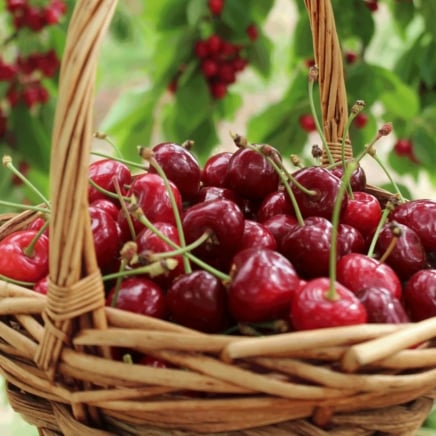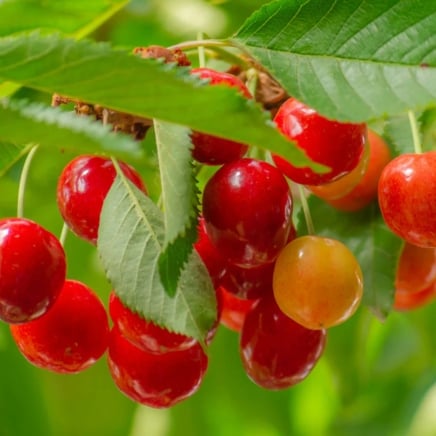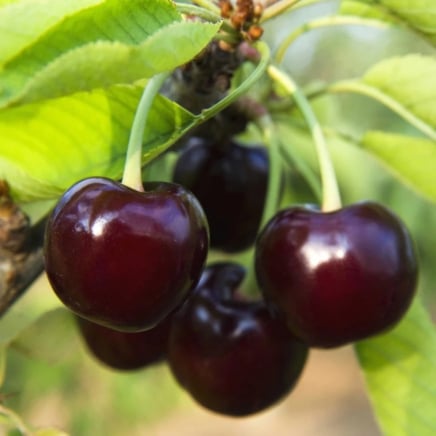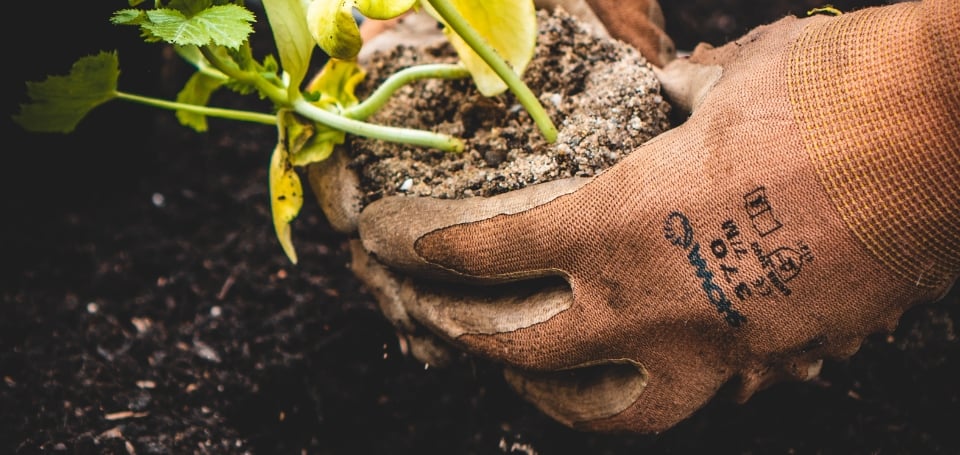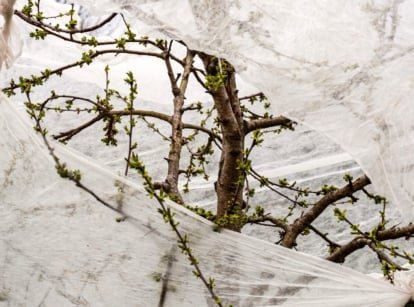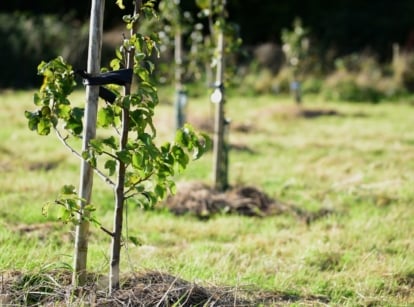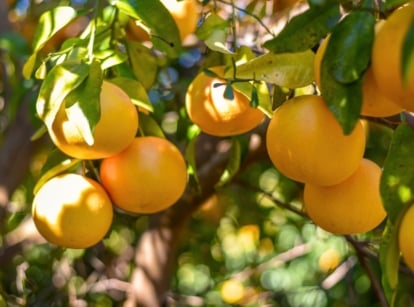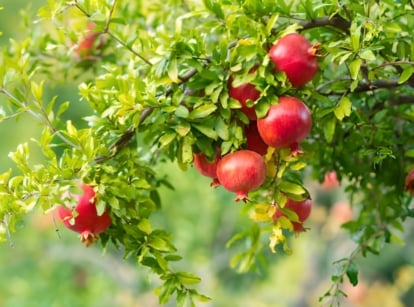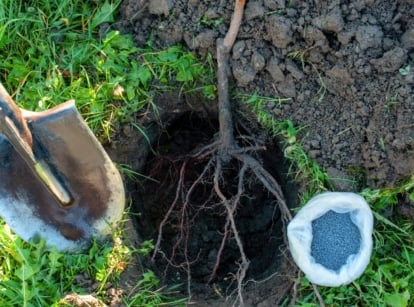9 Most Delicious Cherry Varieties to Grow for Fresh Eating
It’s cherry blossom season across the globe, and at home, we can enjoy the delicate blooms, ornamental bark, and shining fruits of bearing trees. Gardening expert Katherine Rowe highlights the tastiest cherry varieties to plant this season for years of sweet rewards.

Contents
Cherry trees are multifaceted in the edible landscape. They first enchant with delicate blossoms that emerge in spring before the foliage, providing pollen and nectar for pollinators before petals on the wind like confetti. The fresh green, textural leaves follow, with the deep fruits developing by late summer. In winter, their silvery bark is ornamental, and their bare branches create perches for birds.
If not growing an ornamental type (small specimen trees grown mostly for form and flowering), then the nitty-gritty of cherry tree selection is flavor. We want the most production of the tastiest cherries to enjoy right off the branch (and in preserves, pie fillings, and juices). The stone fruits contain anthocyanin, a class of flavonoids with antioxidant properties, in addition to vitamins C and A, beta-carotene, and other nutrients.
Adding cherry trees to the backyard orchard diversifies the collection. Cultivated for thousands of years, Prunus enchants throughout history. Sweet cherries (Prunus avium) are tasty both fresh and cooked, while tart or acid sour types (Prunus cerasus) are usually for cooking and baking.
Picked at peak harvest, the rewards of flavorful sweet cherries and their pretty rounds are the gardener’s prize. To enjoy the best of the delicacy, we’ve got the most delicious cherry tree varieties esteemed for their fresh flavor and texture.
Growing Sweet Cherries

Prunus avium lives for more than a century in optimal growing conditions. The mature trees are sizeable—thirty feet or more—depending on the variety, with upright branching and a pyramidal form. The large stone fruits of sweet cherries appear in drupes and range in color from yellow to red to purple-black and ripen over the summer.
For the best fruiting, many require another variety for cross-pollination. Newer cultivars are self-fruiting and can produce on their own, though yields improve if you have another specimen nearby. Self-fertile types also serve as pollinating partners for those who require it, as long as both bloom at the same time.
They become universal pollinators. But for small spaces or for a singular tree, self-fertile selections are a good fit. Grow flowering shrubs and perennials in the vicinity to support bees and other beneficial insects that visit the blossoms.
Sweet cherries are hardy in zones 5-9 and perform best in areas with mild summers and cool winters. They dislike long summers and short, fluctuating winter temperatures. Cold winters sustain a necessary chill period for flowering and fruiting, which is around 1,000 hours between 35-55°F (2-13°C). Siting and frost protection are important considerations to avoid frost injury to spring blossoms and cold damage to young trees. It should also be noted that these cherries are invasive in certain parts of North America.
Commercial cherry trees are grafted onto vigorous rootstock. This means the upper growth may be your chosen variety while the rootstock is from a top-performing species. The rootstock may have improved cold or heat tolerance, disease resistance, dwarf or compact sizing, and sturdy roots.
Optimal growing conditions include:
- Full sun
- Various soil types with good drainage and a slightly acidic pH (6.2-6.8)
- Regular moisture throughout the growing season, holding off just before peak ripeness to avoid cracked fruits
- Regular pruning during dormancy to promote the best structure and fruiting
‘Bing’

|
|
botanical name Prunus avium ‘Bing’ |
|---|---|
|
|
sun requirements Full sun |
|
|
height 12-35’ |
|
|
hardiness zones 5-8 |
We must start with the classic ‘Bing,’ a favorite for both flavor and production. The heirloom gained popularity in the late 1800s and remains steadfast as a beloved sweet cherry. Out of Oregon, fruit tree specialist Henderson Luelling, the “Johnny Appleseed of the West,” cultivated and distributed cherry, apple, pear, and other fruit trees throughout the Pacific Northwest and California in the mid-1800s. From his orchards came ‘Bing,’ bred by coworker Ah Bing in 1875.
‘Bing’ is an early bloomer with white, fragrant flower clusters. ‘Bing’s’ blooming and ripening timeframe is the benchmark of comparison across varieties. The early to mid-season fruits are large, mahogany red, and heart-shaped. They feature a balanced sweetness and acidity with juicy, firm flesh. The attractive bark is smooth and shiny with reddish overtones and horizontal striations.
It takes several years (up to five or six) for a big yield, when trees can produce up to 100 pounds. ‘Bing’ needs a cross-pollinating variety to fruit. ‘Black Tartarian,’ ‘Ranier,’ and ‘Montmorency’ (a tart cherry) are good pairings.
‘Rainier’

|
|
botanical name Prunus avium ‘Rainier’ |
|---|---|
|
|
sun requirements Full sun |
|
|
height 15-30’ |
|
|
hardiness zones 5-9 |
‘Rainier’ is another delicious cherry variety—maybe the best yellow cherry—for fresh eating. The fruits have showy golden yellow tints to their red-blushed rounds. The fine, fleshy interior is firm and clear yellow-white, with a mild flavor and balanced sweetness.
‘Rainier’ is a durable 1960 hybrid of ‘Bing’ and ‘Van,’ a reliable, cold-hardy black sweet cherry. ‘Rainier’ has hardy buds, making it less susceptible to spring frosts. Fruits resist splitting and cracking and tolerate heat. Because of their light color, the yellow cherries may be less attractive to birds (who love sweet red cherries as much as we do).
‘Rainier’ flowers and produces early in the season, along with ‘Bing.’ Look for ripe cherries in June and July (earlier in warm climates). Partners for cross-pollination include ‘Bing,’ ‘Montmorency,’ ‘Stella,’ ‘Van,’ and ‘Black Tartarian.’ ‘Rainier’ needs 700-900 hours of chill time for the best flowering and fruiting.
‘Chelan’™

|
|
botanical name Prunus avium ‘Chelan’™ |
|---|---|
|
|
sun requirements Full sun |
|
|
height 15-35’ |
|
|
hardiness zones 5-8 |
‘Chelan’™ is a mahogany cherry in deep chocolate red with an exceptionally sweet, mild taste. The pretty fruits mature on the early bloomer about 10 days before ‘Bing.’ The hybrid is a cross between ‘ Stella ‘ and ‘ Beaulieu’ out of Washington state (so many of the top-performing sweet cherries are).
‘Chelan’™ has medium to large fruits with a dark interior to match the rich skin. Its firmness resists cracking from moisture close to ripening time. As other cherries reach peak ripeness, rain or irrigation causes the juicy stone fruits to fill with excess water until they burst or split. ‘Chelan’™ also resists heat damage as fruits develop and may show resistance to powdery mildew.
Cross-pollinators include ‘Rainier,’ ‘Bing,’ and ‘Van.’ It bears loads of fruits from vigorous root stocks, which benefit from regular pruning to manage growth and production.
‘Sweetheart’

|
|
botanical name Prunus avium ‘Sweetheart’ |
|---|---|
|
|
sun requirements Full sun |
|
|
height 15-35’ |
|
|
hardiness zones 5-8 |
‘Sweetheart’ is a pretty cherry variety with medium to large, heart-shaped, delicious fruits in bright red and a sweetness level to match. Firm and aromatic, the flesh is deep red.
‘Sweetheart’ is an introduction out of the Agriculture Canada Research Station in British Columbia. It has parentage in ‘Van’ and ‘Newstar,’ an early bloomer with large fruits and good distribution. ‘Sweetheart,’ too, flowers early in the season but ripens late, around 20 days after ‘Bing.’
‘Sweetheart’ is self-fertile and doesn’t require another variety to set fruits. The heavy yielder of delicious cherries right from the stem is a Royal Horticultural Society Award of Garden Merit recipient. On vigorous rootstock, it may even overproduce. Prune to manage size and fruit quality to avoid an overload of smaller fruits.
‘Lapins’

|
|
botanical name Prunus avium ‘Lapins’ |
|---|---|
|
|
sun requirements Full sun |
|
|
height 12-40’ |
|
|
hardiness zones 5-8 |
Another self-fruitful variety out of British Columbia, ‘Lapins’ has very large cherries with exceptional flavor. The firm, mahogany fruits are abundant and resist cracking. ‘Lapins’ produces fruits after about four years (often earlier, but in smaller amounts).
‘Lapins is a cross between ‘Van’ and ‘Stella.’ The buds resist frost; look to fruits to ripen around mid-June. It blooms early but ripens about 10 days after ‘Bing.’ ‘Lapins’ resembles ‘Bing’ in color, flavor, and bloom time, but is self-fruitful with a smaller form.
‘Emperor Francis’

|
|
botanical name Prunus avium ‘Emperor Francis’ |
|---|---|
|
|
sun requirements Full sun |
|
|
height 12-18’ |
|
|
hardiness zones 5-8 |
‘Emperor Francis’ is a delicious light-colored sweet cherry and an old variety that does well in the Northwest and Eastern U.S from the Great Lakes to the Mid-Atlantic. Sometimes, winters in the east prove challenging for cold-susceptible fruit trees, but ‘Emperor Francis’ is a reliable performer.
‘Emperor Francis’ cherries are light yellow-white and kissed with red. Their sugar content makes them especially sweet, and they’re a cherry variety for fresh eating and are also versatile in cooking and baking. Light sweet cherries often become maraschinos, preserved and further sweetened.
‘Emperor Francis’ is in the same pollinator group as ‘Bing,’ among others, meaning they’re cross-unfruitful and cannot pollinate each other. Use a self-fruitful variety like ‘Lapins,’ ‘Sweetheart,’ or ‘White Gold’ that blooms simultaneously as ‘Emperor Francis.’
‘Stella’

|
|
botanical name Prunus avium ‘Stella’ |
|---|---|
|
|
sun requirements Full sun |
|
|
height 18-20’ |
|
|
hardiness zones 5-8 |
‘Stella’ is a self-fruitful variety with deep red to black hearts. Firm, juicy, and noted for its flavor, ‘Stella’ is a favorite cherry for fresh eating.
‘Stella’ pollinates all other cherries that bloom at the same time (though Washington State University found it may not work the best for ‘Bing’ in some cases). The solid performer bears fruit in two to five years and is a Royal Horticultural Society Award of Garden Merit recipient. ‘Stella’ has gone on to parent other cultivars like ‘Chelan.’
‘Regina™’

|
|
botanical name Prunus avium ‘Regina™’ |
|---|---|
|
|
sun requirements Full sun |
|
|
height 15-25’ |
|
|
hardiness zones 5-8 |
Like ‘Lapins’ and ‘Sweetheart,’ ‘Regina™’ is later to ripen, maturing late in the season (about a week or more after ‘Bing’). The very large, dark red-to-black cherries have balanced acidity and sweetness. Flesh nearly matches the rich hue of the external skin. The firm, crunchy cherries resist cracking from near-harvest rains.
‘Regina™’ is a compact tree with upright branching and a high crop yield, especially in cool climates. It needs cross-pollination to fruit. Look to ‘Stella,’ ‘Lapins,’ ‘Emperor Francis,’ and ‘Sweetheart’ among compatible varieites.
‘Skeena™’

|
|
botanical name Prunus avium ‘Skeena™’ |
|---|---|
|
|
sun requirements Full sun |
|
|
height 12-18’ |
|
|
hardiness zones 5-8 |
‘Skeena™’ is another compact selection with strong parentage. The first parent is a ‘Van’ and ‘Bing’ cross, and the other is a ‘Bing’ x ‘Stella’ hybrid. This makes ‘Skeena™’ a super strong producer with crack-resistance and excellent flavor. The spreading branches are also easy to manage.
Like ‘Stella,’ ‘Skeena™’ is self-fruitful. The very large, rounded fruits ripen from bright red to almost black, and the interior is dark red. The taste is mild, pleasing, and sweet, with a good crunch and firmness. The late-season producer begins flowering several days after ‘Bing’ and ripens about two weeks later.

